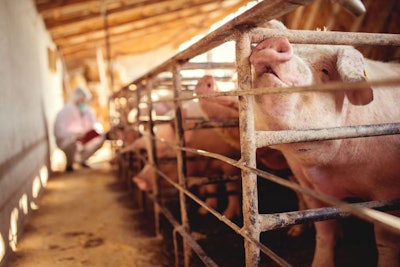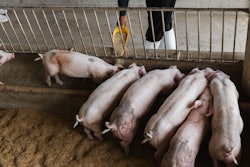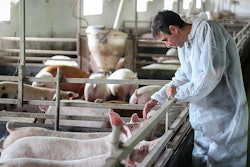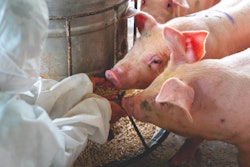
The disease has also returned to Russia’s Far East after a brief hiatus, and losses from ASF have led to a dramatic contraction in the pig population of the Philippines.
After an absence of seven months, African swine fever (ASF) virus has been detected at a pig farm in South Korea. After confirmation of a first outbreak since October 2020, 401 pigs have been culled in South Korea’s northwestern province of Gangwon.
Authorities immediately introduced a 48-hour ban on the transportation of livestock in this province as well as neighboring Gyeonggi and North Chungcheong, reports Yonhap. Source of infection is uncertain, but the ASF virus is known to be prevalent among the area’s wild boar population. More than 780 cases in wild boar have been confirmed in this border area, and more than 3,000 more animals have been culled.
According to this source, ASF hit 14 pig farms across South Korea in 2019. As a result, around 400,000 pigs were culled to reduce the risk of virus transmission.
Since ASF was first detected in the country in September 2019, more than 28,700 domestic pigs have been directly impacted as a result of mortality or culling at infected premises. This is according to official reports to the World Organisation for Animal Health (OIE).
In the period April 21-27, South Korea’s veterinary authority has recorded a further 29 infected wild boar, bringing the total so far to 1,404.
Backyard herd affected in Russia’s Far East
At the end of April, both of the pigs in a backyard farm in the Far Eastern federal district tested positive for the ASF virus. This is according to the latest report from Russia’s animal health agency to the OIE. The affected premises was in Poltavka, which is in the Oktyabrsky district of Primorsky krai.
According to the OIE, ASF first arrived in Russia in 2007. In this district, there have been 211 confirmed ASF outbreaks. Directly impacted have been around 7,800 domestic pigs and wild boar in five administrative areas, including previous outbreaks in Primorsky krai.
Novel treatment for ASF tested in the Philippines
Since ASF first arrived in the Philippines in July 2019, OIE has recorded the loss of almost 426,000 pigs through mortality or culling. In terms of these losses, the Philippines has been the second most affected country in Asia (behind Vietnam).
As part of a research program into possible treatments for the disease, Agriculture Secretary William Dar has announced plans to investigate the efficacy of ivermectin. According to Business Mirror, the research team will propose trials to examine the use of ASF Buster, Cloud Feed and other products — as well as ivermectin — for the control and prevention of ASF.
Containing hydrogen peroxide and zinc, ASF Buster is described as “an external and oral disinfectant to kill bacteria and neutralize viruses,” according to the manufacturer. Ivermectin is a broad spectrum anti-parasitic agent against several parasitic diseases in humans, according to the World Health Organization. With its anti-parasitic properties, the same drug is included in veterinary products for cattle, pigs, horses and pets.
One week ago, Secretary Dar announced that trials had begun in the Philippines on an ASF vaccine for pigs.
New ASF outbreaks, rising inflation
After a period without reporting new outbreaks of ASF, Philippine News Agency (PNA) has recently confirmed that the disease is still present in 19 districts in Eastern Visayas region.
First outbreak in this region was confirmed in the province of Leyte in mid-January. Spread of the infection was blamed on use of a shared boar for natural mating, or hog trades. ASF has since been detected in four of the region’s six provinces, and more than 11,000 pigs have been culled.
At 4.5%, the headline inflation rate for April in the Philippines is unchanged from the previous month, according to PNA. It remains well above the target rate of 2-4%. Reaching a record level were meat prices at 22.1%, pushed up by inflation of almost 58% for pork.
This dramatic increase in the price of pig meat has been blamed on losses of pigs from ASF. With the national pig population contracting by 26% in the first quarter of the year, there were shortages in pork supplies. This situation is used to justify a recent executive order from the president, which aims to increase pork imports, and thus ease the supply situation and bring down prices back to affordable levels.
View our continuing coverage of the global African swine fever situation.


















